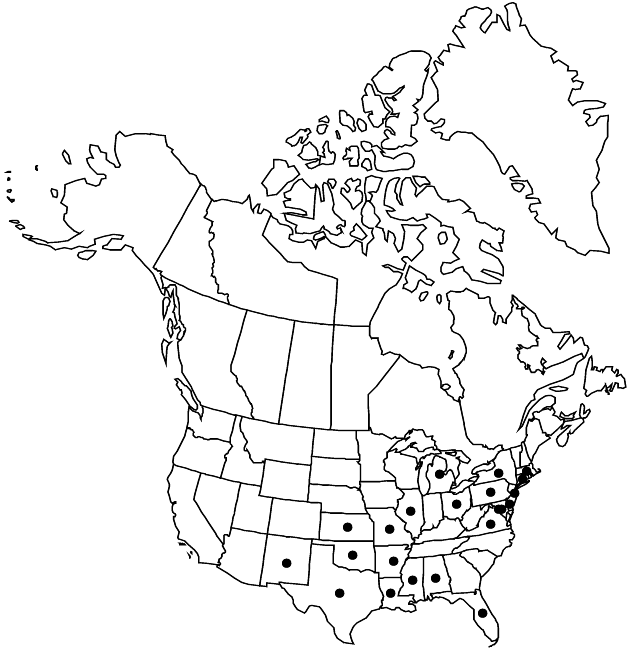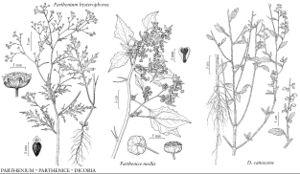Difference between revisions of "Parthenium hysterophorus"
Sp. Pl. 2: 988. 1753.
FNA>Volume Importer |
FNA>Volume Importer |
||
| Line 46: | Line 46: | ||
|publication year=1753 | |publication year=1753 | ||
|special status= | |special status= | ||
| − | |source xml=https://jpend@bitbucket.org/aafc-mbb/fna-data-curation.git/src/ | + | |source xml=https://jpend@bitbucket.org/aafc-mbb/fna-data-curation.git/src/f50eec43f223ca0e34566be0b046453a0960e173/coarse_grained_fna_xml/V19-20-21/V21_36.xml |
|tribe=Asteraceae tribe Heliantheae | |tribe=Asteraceae tribe Heliantheae | ||
|subtribe=Asteraceae (tribe Heliantheae) subtribe Ambrosiinae | |subtribe=Asteraceae (tribe Heliantheae) subtribe Ambrosiinae | ||
Revision as of 20:36, 16 December 2019
Annuals, (10–)30–120+ cm. Leaf blades ovate to elliptic, 30–180+ × 10–50(–90+) mm, (1–)2-pinnately lobed (ultimate lobes lanceolate to linear, 3–50 × 2–15 mm), faces sparsely to densely scabrellous and gland-dotted (seldom with additional erect hairs 1–2 mm). Heads obscurely radiate, borne in open, paniculiform arrays. Peduncles 1–8(–15+) mm. Phyllaries: outer 5(–6), lance-elliptic, 2–4 mm, inner 5(–6) ovate to ± orbiculate, 2.5–4 mm. Pistillate florets 5(–6); corolla laminae reniform or orbiculate to oblong, 0.3–1 mm. Disc florets 12–30[–60]. Cypselae obovoid, 1.5–2(–3.5) mm; pappus-like enations erect, deltate to ovate, 0.5–1 mm (sometimes a third, subulate spur near apex adaxially). 2n = 34.
Phenology: Flowering Mar–Nov.
Habitat: Disturbed sites
Elevation: 0–300 m
Distribution

Ala., Ark., Conn., Del., D.C., Fla., Ill., Kans., La., Md., Mass., Mich., Miss., Mo., N.J., N.Mex., N.Y., Ohio, Okla., Pa., Tex., Va., Mexico, introduced in subtropical, tropical, and warm-temperate New World and Old World.
Discussion
In some places, especially in Old World, Parthenium hysterophorus causes serious contact dermatitis in humans. The plants should be handled with caution.
Selected References
None.
